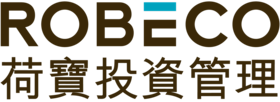

A more flexible approach to multi-asset investing
Robeco has launched a new strategy that offers a more flexible yet targeted approach to investing across different asset classes.
概要
- New Flexible Allocation strategy targets a return of cash plus 4%
- Approach allows diverse asset mix of equities, bonds or alternatives
- Strategy targets retail and wholesale investors looking to beat inflation
Flexible Allocation will target an annual return of the market rate for cash plus 4%, and will not follow a traditional benchmark. Instead, asset allocation will be based on Robeco’s annual Expected Returns publication, which aims to predict the likely returns of equities, credits, government bonds and other assets over the coming five years.
It is the fourth strategy in the multi-asset range, which was reorganized earlier in 2024 as the Sustainable Income Allocation, Sustainable Diversified Allocation strategy and Sustainable Dynamic Allocation strategies. Each has its own return and volatility characteristics, and each follows the relevant market benchmark.
Differentiating from the other three, the Flexible Allocation strategy has free reign to pick securities across the entire spectrum of assets managed by other Robeco equity and fixed income teams. This means it will not necessarily follow the usual ‘60-40’ multi-asset mix of populating the portfolio with 60 equities and 40% bonds mirrored by standard benchmarks.
“The main differential is that many investment strategies are obsessed with being anchored in a benchmark, whereas the central focus of this strategy is achieving an annual return of cash plus 4% return at a medium risk level,” says Jon Arthur, client portfolio manager for the new strategy. “That allows us to express what we think are the best investment ideas.”
“A benchmark such as the MSCI World Index is usually the starting point for any investment strategy. So, whether it's a 60-40 or 75-25 mix, or whatever the allocation, trying to beat that benchmark is what usually drives your positions.”
“Instead, the Flexible Allocation strategy is designed to offer a lot more active and dynamic views in terms of the asset mix. That is highlighted by the range of equity exposure, which could be anything from 0 to 75%, whereas typically you would see stocks in a multi-asset portfolio accounting for plus or minus 10% of the traditional benchmark.”
The full range of Sustainable Multi-Asset Solutions strategies

Source: Robeco
Using Expected Returns
Expected Returns will be used to decide the ideal mix and weightings to create a balanced portfolio with a mid-range level of risk. The latest edition of the five-year outlook, published in September 2024, predicts that emerging market equities will offer the highest level of returns from 2025-2029, followed by emerging markets debt and commodities.
As with all Robeco portfolios, the Flexible Allocation strategy integrates environmental, social and governance (ESG) factors as standard. However, it is not specifically sustainability focused, using only exclusions and also removing the companies with the lowest scores on the Robeco SDG Framework. Subsequently, it does not carry the word ‘Sustainable’ in its name.
Stable investment returns
Instead, the strategy aims to use its inherent flexibility to produce stable returns over a business cycle. “In terms of the client experience, this means the asset allocation is much more dynamic, though the flipside of this is that the distribution of returns is narrower,” says Arthur.
“So, for those seeking a steadier investment journey, Flexible Allocation gives us more freedom to offer a mix of investment views, looking to optimize its risk-adjusted returns. That is where the flexibility part comes into its own.”
“We can access some of the best ideas in underlying security selection from across Robeco, whether that’s from the equity side, thematic, credit selection, or whatever.”
Popular approach in Asia
The strategy targets the retail or wholesale investor with a mid-range risk appetite, and has a standard five-year investment horizon for returns. “A lot of people are looking to hit a retirement target pot of, say EUR 1 million, and so targeting cash plus 4% sets it in a nice risk range,” Arthur says.
“Focusing on a returns target is pretty crucial for retail investors, because if your portfolio goes down 10%, you will feel that twice as much as the positive feeling from being up 10%. For us, there is ample upside capture, but when things do go south, the portfolio does protect quite well on the downside.”
“This is particularly the case in Asia, where investors tend to have less of a preference for benchmark-type approaches. They want the best investment views and don’t want the benchmark to be used as an excuse for performance.”
“Instead, they want to know the active risk of each stock in the portfolio, and what is our latest view on the asset allocation to try to optimize cash flows. They’ll ask us what we think are currently the most attractive stocks, credits and government bonds to get there.”
Beating the CPI
In all, the strategy seeks to at least offer a hedge against inflation. Expected Returns 2025-2029 predicts that inflation is going to run higher than the central banks’ virtually universal Consumer Price Index (CPI) target of 2% for the next four or five years, with a base case of 2.5% in euros.
“So, having a cash plus 4% target would at least cover inflation,” Arthur says. “The asset classes might change, but their return distributions are more stable over time. It’s ideal for a retail or wholesale client who wants a stable investment journey that can outpace inflation and protect the real value of their investments.”
獲取最新市場觀點
訂閱我們的電子報,時刻把握投資資訊和專家分析。
Important information
The contents of this document have not been reviewed by the Securities and Futures Commission ("SFC") in Hong Kong. If you are in any doubt about any of the contents of this document, you should obtain independent professional advice. This document has been distributed by Robeco Hong Kong Limited (‘Robeco’). Robeco is regulated by the SFC in Hong Kong. This document has been prepared on a confidential basis solely for the recipient and is for information purposes only. Any reproduction or distribution of this documentation, in whole or in part, or the disclosure of its contents, without the prior written consent of Robeco, is prohibited. By accepting this documentation, the recipient agrees to the foregoing This document is intended to provide the reader with information on Robeco’s specific capabilities, but does not constitute a recommendation to buy or sell certain securities or investment products. Investment decisions should only be based on the relevant prospectus and on thorough financial, fiscal and legal advice. Please refer to the relevant offering documents for details including the risk factors before making any investment decisions. The contents of this document are based upon sources of information believed to be reliable. This document is not intended for distribution to or use by any person or entity in any jurisdiction or country where such distribution or use would be contrary to local law or regulation. Investment Involves risks. Historical returns are provided for illustrative purposes only and do not necessarily reflect Robeco’s expectations for the future. The value of your investments may fluctuate. Past performance is no indication of current or future performance.






















